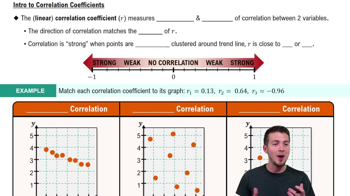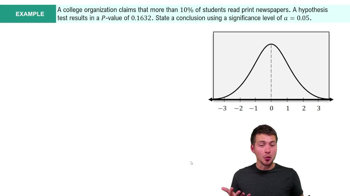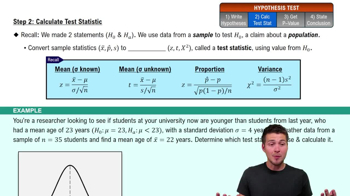Here are the essential concepts you must grasp in order to answer the question correctly.
Rank Correlation Coefficient
The rank correlation coefficient, often represented by Spearman's rho, measures the strength and direction of association between two ranked variables. It assesses how well the relationship between the variables can be described using a monotonic function. This is particularly useful when the data does not meet the assumptions of parametric tests, making it a robust choice for nonparametric analysis.
Recommended video:
Significance Level
The significance level, commonly denoted as alpha (α), is the threshold for determining whether a result is statistically significant. In this context, a significance level of 0.05 indicates that there is a 5% risk of concluding that a difference exists when there is none (Type I error). It helps researchers decide whether to reject the null hypothesis based on the p-value obtained from the test.
Recommended video:
Step 4: State Conclusion Example 4
Nonparametric Tests
Nonparametric tests are statistical methods that do not assume a specific distribution for the data, making them suitable for ordinal data or when sample sizes are small. These tests are particularly useful when the assumptions of parametric tests, such as normality, are violated. Examples include the Wilcoxon signed-rank test and the Kruskal-Wallis test, which are often used in place of t-tests or ANOVA when data does not meet required conditions.
Recommended video:
Step 2: Calculate Test Statistic






